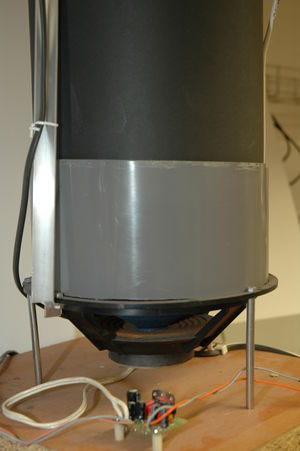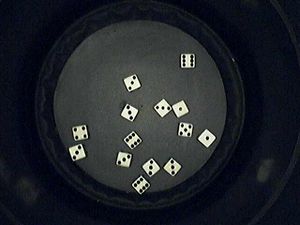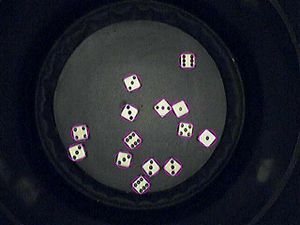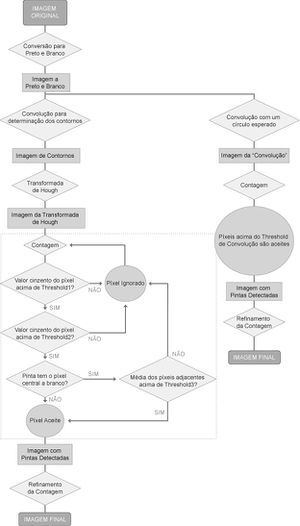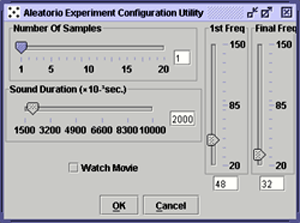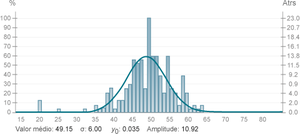Dice Statistics
Description
This experiment consists on a apparatus that automatically shuffle a set of six-sided dice. To count the spots, it acquires and process an image recognition pattern from the top side of each of these dice.
By recording the number of times each side appears, one can to study the law of probabilities and develop a statistical study of random phenomena. Using the images that this experiment outputs, one can also develop his own algorithms using them in the study of computer recognition software.
<swf height="480" width="480">http://www.elab.tecnico.ulisboa.pt/anexos/descricoes-flash/EstatisticaDados.swf</swf>
Links
- Video: [unavailable]
- Laboratory: Básico em e-lab.ist.eu[1]
- Control room: Aleatório
- Grade: ***
Experimental Apparatus
In this experiment there is an loudspeaker positioned horizontally with a platform on top of the cone made of k-line (structured light cardboard with polyurethane), where fourteen dice are spread. Above it, at 300mm from the platform is a video camera equiped with a white high brightness LED to illuminate it.
The release (i.e. shuffling) of the dice is achieved trough the exciting of the speaker with a sound wave, which makes the platform to vibrate with the same frequency of the wave.
This platform has a wall that prevents the dice from leaving the platform (and the field of view of the web-cam). The wall is quite high to prevent the entry of light from outside of the lighting system.
With this apparatus, pictures are obtained as we can see in figure 2.
The image processing is made according to the flowchart below and the result of this process leads to an image like the one in figure 3.
Protocol
The execution protocol of the experience is simple because consists in excite, conveniently, the platform so that it can scramble the dice. And then, we describe the main features of the configurator control room for a better understanding thereof.
Advanced Protocol
After enough samples a graph can be constructed with the number of times each number is recorded in each bin and a Gaussian distribution can be fitted:
\[ p(x) = y_0 + A e ^{- \frac{(x- \mu)^2}{\sigma ^2}} \]
Since there are 14 dice, the expected mean value is 49 (why?) which is confirmed by the fitting to the build-up of values.
The best way to conduct this study is to merge the results of several users and see and the fit is improved with increasing number of samples.
The expected value for the average of N 6-sided dice is:
\[ \bar{\mu} = \frac{6N+N}{2} \]
